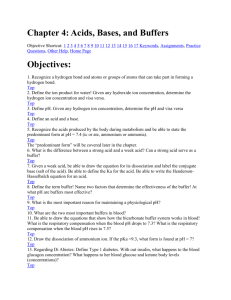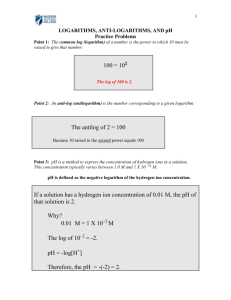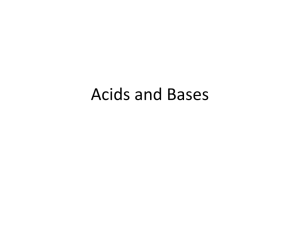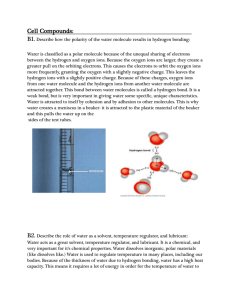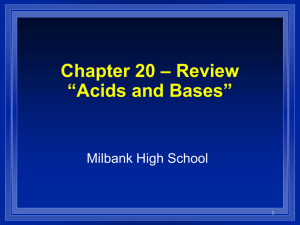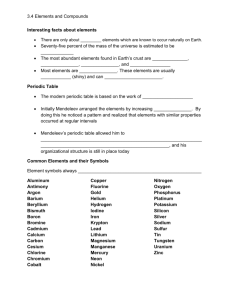DEFINE -An acid -A base -Buffer -Acidosis
advertisement
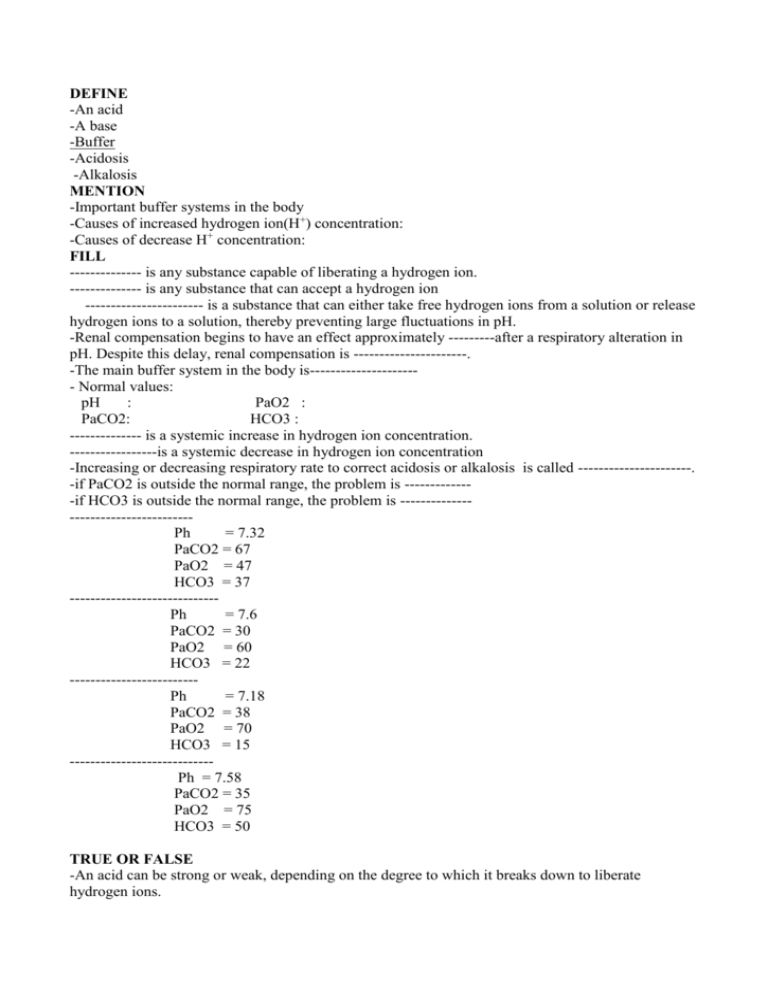
DEFINE -An acid -A base -Buffer -Acidosis -Alkalosis MENTION -Important buffer systems in the body -Causes of increased hydrogen ion(H+) concentration: -Causes of decrease H+ concentration: FILL -------------- is any substance capable of liberating a hydrogen ion. -------------- is any substance that can accept a hydrogen ion ----------------------- is a substance that can either take free hydrogen ions from a solution or release hydrogen ions to a solution, thereby preventing large fluctuations in pH. -Renal compensation begins to have an effect approximately ---------after a respiratory alteration in pH. Despite this delay, renal compensation is ----------------------. -The main buffer system in the body is--------------------- Normal values: pH : PaO2 : PaCO2: HCO3 : -------------- is a systemic increase in hydrogen ion concentration. -----------------is a systemic decrease in hydrogen ion concentration -Increasing or decreasing respiratory rate to correct acidosis or alkalosis is called ----------------------. -if PaCO2 is outside the normal range, the problem is -------------if HCO3 is outside the normal range, the problem is ------------------------------------Ph = 7.32 PaCO2 = 67 PaO2 = 47 HCO3 = 37 ----------------------------Ph = 7.6 PaCO2 = 30 PaO2 = 60 HCO3 = 22 ------------------------Ph = 7.18 PaCO2 = 38 PaO2 = 70 HCO3 = 15 ---------------------------Ph = 7.58 PaCO2 = 35 PaO2 = 75 HCO3 = 50 TRUE OR FALSE -An acid can be strong or weak, depending on the degree to which it breaks down to liberate hydrogen ions. -hydrogen chloride (HCl) rapidly and totally breaks down into hydrogen and chloride ion; therefore, it is considered a strong acid - few lactic acid molecules break down to hydrogen ion and lactate; therefore, lactic acid is considered a weak acid. -A base can be strong or weak, depending on the degree to which it accepts a hydrogen ion. -Most acids and bases found in the body are weak. -Although carbon dioxide itself is not an acid, it joins with water to form carbonic acid . -The minute-by-minute regulation of plasma pH is controlled by an increase or decrease in the rate of respiration. This system is possible because of the sensitivity of the respiratory center in the brain to free hydrogen ions which usually vary in accordance with carbon dioxide. -Non-volatile acids(as lactic acid, acetic acid, acetoacetic acid) produced during metabolism are excreted in the urine. -Respiratory compensation occurs immediately upon changes in hydrogen ion concentration, because H+ controls respiratory center . -Renal compensation begins to have an effect approximately 24 hours after a respiratory alteration in pH. Despite this delay, renal compensation is powerful. -if PaCO2 is outside the normal range, the problem is respiratory -if HCO3 is outside the normal range, the problem is metabolic MCQ * Causes of decrease H+ concentration: a -excess loss of carbon dioxide during hyperventilation. b -excess loss of non-volatile acids during vomiting. c- excess ingestion of a base. d-all. *Causes of increased hydrogen ion(H+) concentration: a -failure of the lungs to eliminate Co2 b -excess production of volatile or non-volatile acids. c-loss of bicarbonate base caused by persistent diarrhea d -failure of the kidney either to reabsorb bicarbonate or to secrete hydrogen ions.
